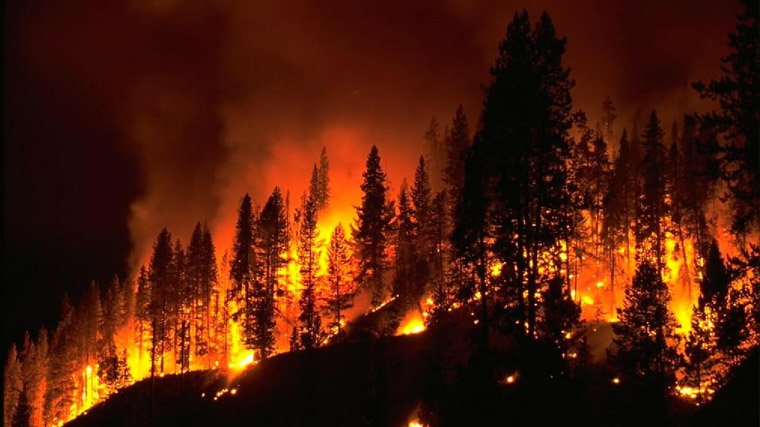Budget cuts are being seen across the board in Alberta, especially with the recent economic downturn that the oil industry has faced. To save money, the Alberta Government has unveiled a plan that could compromise the safety of Alberta residents and the landscapes that they call home. Alberta Environment is looking at a $35 million budget drop with roughly half the savings coming from 150 dropped jobs, says department spokeswoman Carolyn Stuparyk.
Approximately $6.5 million from the budget cut is planned to come from the Firesmart program. This program allocates money for crews to remove trees and brush from forested communities that face higher probabilities of fires. Additionally, $2 million is set to come from cutting the number of air-tanker teams from nine to eight. Air-tanker teams consist of an aircraft that scouts areas for fires and one or more airtankers that release water on fires.
In 2014, there were more than 1,400 wildfire responses in the Alberta forest zone destroying approximately 230 sq km of land. As of March 1, the 2015 wildfire season has officially begun with more than 24 forest fires recorded thus far. It is difficult to predict how a wildfire season will pan out, especially with climate changes says NAIT Wildfire instructor Christian Klitbo.
“Extreme weather events, both dry and wet, are becoming the norm,” states Klitbo. As with the case of Slave Lake in 2011, where the area faced wildfires and then, two weeks later, dealt with flooding.
It looks like the province is preparing itself for a slower wildfire season in order to save money but what will that cost the province in the long run if their projections are wrong?
“Whenever anything like wildfire threatens communities, we will take whatever steps necessary to protect Albertans,” said Stuparyk.
This involves bringing in staff and equipment from the rest of Canada and requesting emergency funding. If their predictions are wrong, Alberta will be relying on Mutual Aid Resource Sharing agreements to fill any holes. This was the case in 2011, when BC was able to send fire crews to other provinces during a slow season. Last year Ontario faced one of the wettest fire seasons to date and was able to aid the Western provinces when the need arose.
For this provincial strategy to be financially successful, it is crucial that extreme wildfires don’t occur across Canada at once. Economically, the loss of 150 jobs in the environmental sector will only add to the province’s rising unemployment.
It is unknown how the recent budget cuts will affect NAIT graduates of the Forest Technology program if at all. Klitbo says that students seeking seasonal employment on firefighting crews haven’t been facing many problems finding jobs. However, it has been heard that Alberta Environment and Sustainable Resource Development department may be holding off on hiring for entry-level positions as they wait to see what happens.
The provincial government is playing with fire, but only time will tell if this money saving strategy will pay off or not.
Tania Boyko






